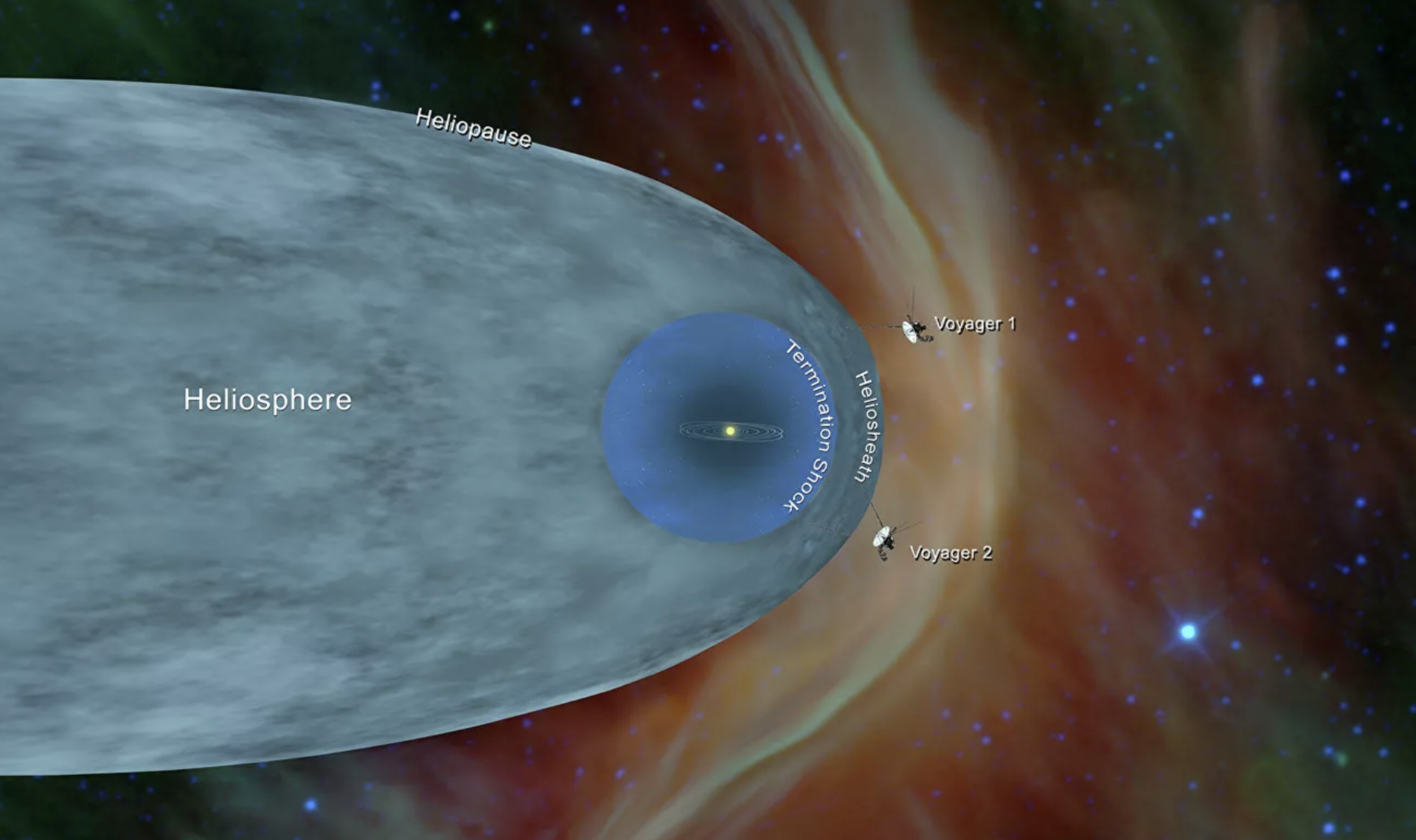The United States National Aeronautics and Space Administration (NASA) received and decrypted the first data sent from Voyager-2 after it reached interstellar space. This was reported in the department itself.
As noted, the device entered the interstellar space, leaving the heliosphere - the area around the Sun, "which is filled with particles and magnetic fields" created by the star. This happened on November 5, 2018. But the data that Voyager-2 sent from the instruments to Earth came to scientists only now, because the signal had to cover a distance of about 18 billion kilometers.
The NASA spacecraft transmitted data from five devices to scientists: a magnetic field sensor, two devices for detecting energy particles and two for studying plasma. A detailed report was published in Nature Astronomy. According to the data from each device, a separate article was written.
"The combination of these results helps to paint a picture of this space" coastal strip "where the Sun’s environment ends and a huge ocean of interstellar space begins," the NASA official website reported.
Twin studies
Voyager-2 is the second spacecraft to succeed beyond the limits of the solar system. Its predecessor, Voyager-1, was launched 16 days later - September 5, 1977 - but it flew along a shorter route, and therefore was the first to leave the heliosphere. Now it is located at a distance of 22 billion km from the Sun, and its "brother" - 18.2 billion km. Voyager-2 is equipped with advanced instruments that are capable of transmitting to the Earth data on the nature of the heliospheric mantle and interstellar medium.
“The fantastic journey continues! A year ago, in the same week, Voyager-2 joined me in interstellar space. Today, five newspapers published articles about my twin’s data in the region just outside the “bubble” that the Sun creates, NASA said on an official Twitter account on behalf of Voyager-1.
Leading researcher at the Space Research Institute of the Russian Academy of Sciences, Nathan Eismont, in an interview with Sputnik radio, noted that data from both devices confirm the existing fundamental theories of the structure of the Universe.
- NASA
- © JPL-Caltech
“The fact that Voyager-2 confirmed the Voyager-1 data on the existence of a certain boundary between the solar wind region and interstellar gas is very important,” he said.
Thus, now the assumptions of scientists that there is a demarcation line between the solar system and interstellar gas have been confirmed. The sun is surrounded by space filled with plasma of the solar wind, which moves relative to the star at supersonic speed and protects everything inside the sphere from most of the cosmic rays - particles dispersed by explosions of stars. According to Eismont, the data from the two devices also confirm the theory of evolution of both the solar system and the entire universe.
Extra Long Flight
Voyager-2 is the only device that managed to reach Uranus and Neptune. For such a long-distance flight, scientists have designed a special energy supply system. Since the device was originally intended to work at a great distance from the Sun, the use of solar panels was not possible. Three radioisotope thermoelectric generators using plutonium-238 in the form of oxide were installed on Voyager-2.
The half-life of this element is 87.7 years. As decay (the mission lasts for over 40 years) and the degradation of thermocouples that convert energy to electricity, the power of the generators decreases. To save energy in June this year, NASA experts decided to turn off the heating of one of the systems - a cosmic ray detector. As a result, the temperature dropped to -59 ° C. The planned lower limit was -45 ° C. But scientists assure that the system is still working and is transmitting data to Earth.
According to experts, after about 9 years, the spacecraft will run out of fuel and will no longer be able to transmit signals to Earth.
Now the mission of Voyager-2 continues. According to NASA, every year it is on average 466 million km away from Earth.

